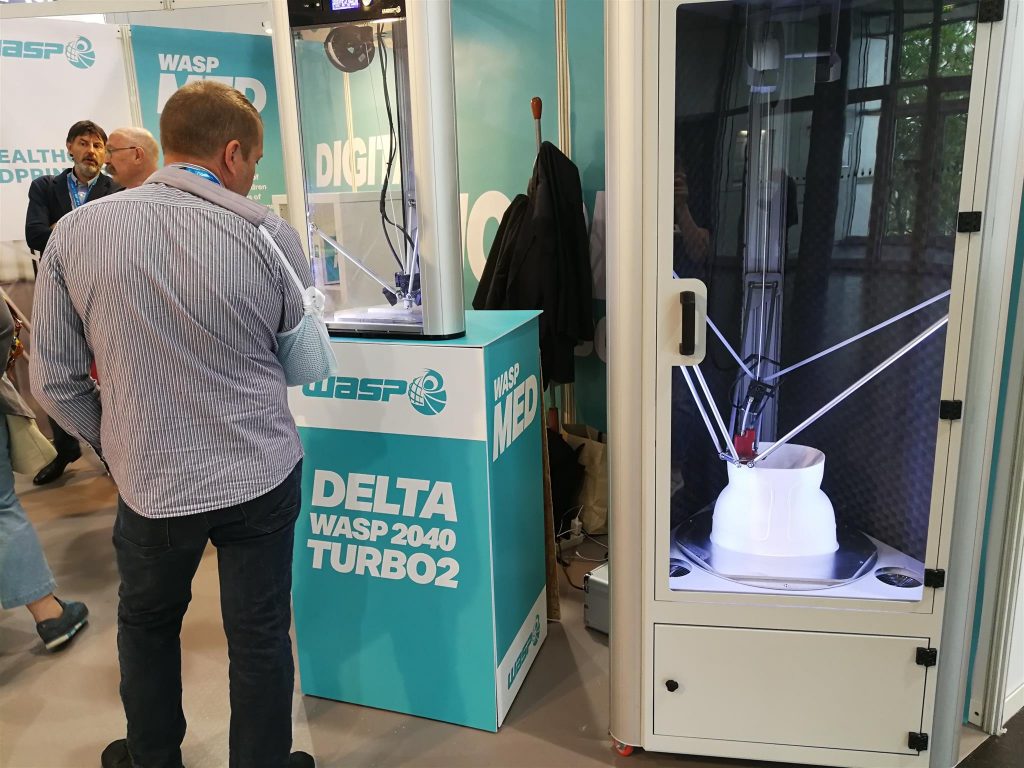Italian 3D printer manufacturer WASP has launched a Digital Orthopedic Laboratory giving patients access to custom 3D printed medical support devices.
Launched under the WASPMed division, the Digital Orthopedic Laboratory combines the company’s mechanical and technical expertise with the work of experienced physicians Dr. Lelio Leoncini, a specialist in physical medicine and rehabilitation, and neurosurgeon Villiam Dallolio.

In addition, WASP has also donated an artificial limb 3D printing laboratory to the University of Damascus in Syria, to help those suffering in conflict.
“Our goal,” explains Massimo Moretti, founder and CEO of WASP, “is to develop processes, machines and materials to make a high quality service even in the developing-world-areas,”
“In Syria we will put into practice the connection between the medical knowledge of experts from our territory and the needs of a country devastated by the war.”
Customized medical devices
WASP’s Digital Orthopedic Laboratory is a four part system, covering hardware, materials and software.
The first part of the system is the WASP 4C Bust Scanner, designed for accurately imaging the upper portion of a person’s body.
Inside a typical delta frame, WASP has installed four lenses. Moving smoothly along the track of the frame, these lenses scan the body of a person stood in the center.
The whole process takes less than 6 seconds to complete, leaving designers with a 3D model to serve as a base for designing orthopedic supports.
A complete 3D printing lab system
The second part of the lab system, is the WASP Workstation – the software for scanner control and slicing, plus open-source tools to help in the custom modeling process.
The third part, the so-called “heart of the system”, is two large-scale DeltaWASP 3D printers: the 2040 TURBO2 and the 4070 Industrial. Two of the most recent additions to the WASP family, both 3D printers are optimized for industrial use, featuring automatic systems for non-stop 3D printing, heightened accuracy, and pelletized feedstock.
The DeltaWASP 4070 Industrial has a build volume of 84 liters ( Ø 400 h x 670 mm), and the DeltaWASP 2040 TURBO2
To support these systems, WASP is also selling a range of medical materials, including polypropylene, carbon nylon, and antibacterial TPU and ABS.

Helping Syrians in conflict
In Syria, the University of Damascus will be acquiring two WASP 3D printers that will be able to build artificial arms, fingers and legs. The initiative has been launched with the collaboration of design, 3D printing and modeling startup ARCHE 3D Mantova, and Syrian volunteer association AMAR Costruire Solidarietà.
Professor Firas Al Hinnawi, from the Faculty of Mechanical and Electrical Engineering, explains, “With the University of Damascus, WASP and AMAR we are working on three areas. We’ll start from the artificial fingers on which we have already done a lot of work. Then we will pass to the hands and the forearm. Finally we will focus on the lower limbs.”
Subscribe to the 3D Printing Industry newsletter, follow us on Twitter and like us on Facebook for all the latest 3D printing medical updates and more.
Sign up to our free 3D Printing Jobs service to post and find new opportunities near you.
Featured image shows a back brace 3D printed by the WASP Digital Orthopedic Laboratory. Photo via WASP



